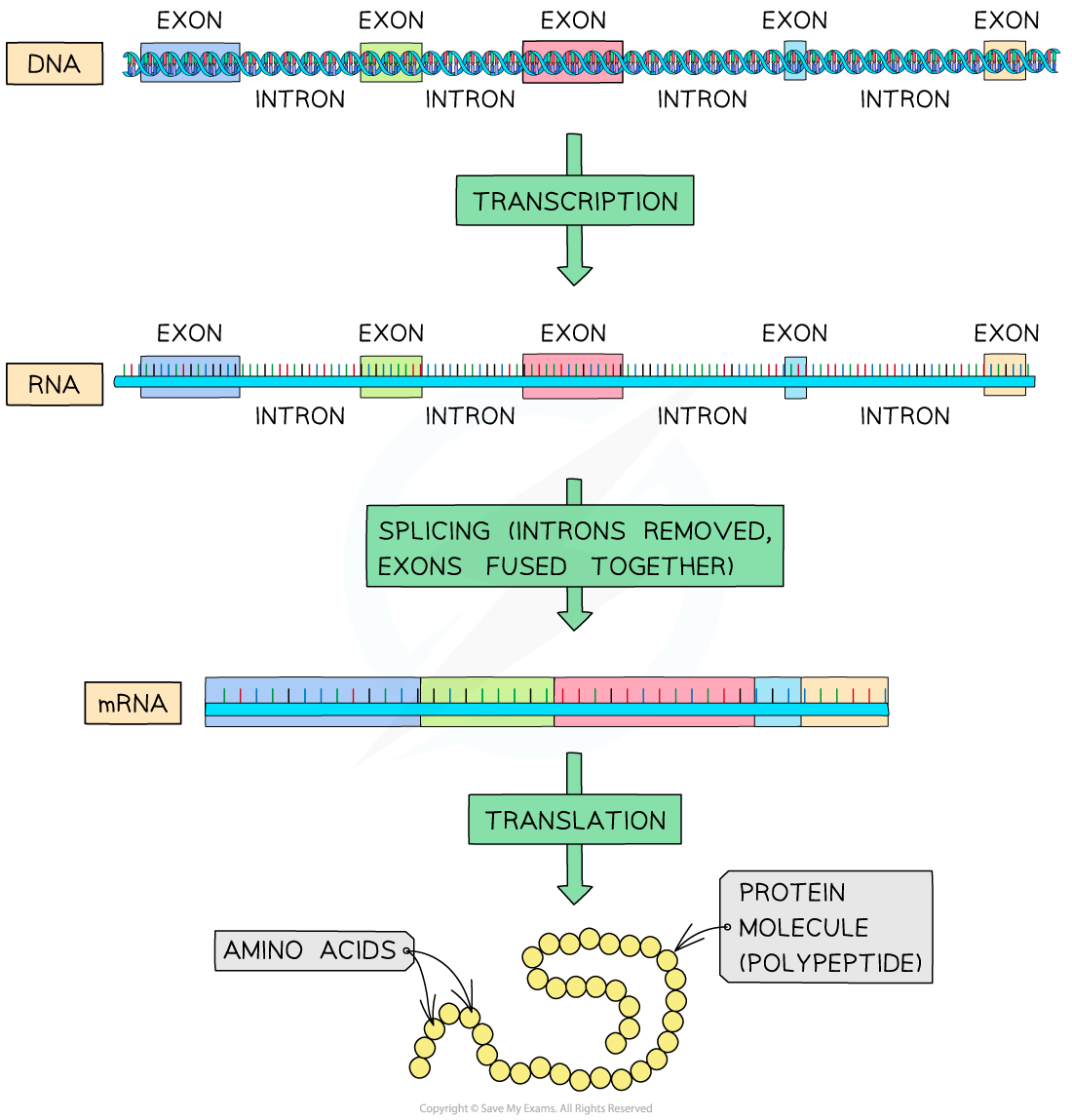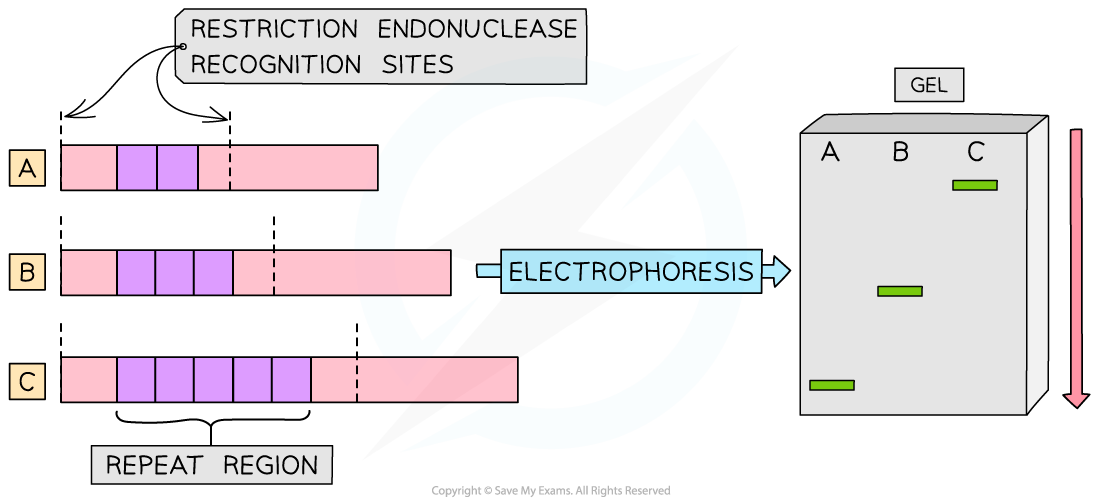- 翰林提供学术活动、国际课程、科研项目一站式留学背景提升服务!
- 400 888 0080
IB DP Biology: HL复习笔记7.1.3 Non-coding DNA
Non-coding Regions of DNA
- DNA molecules are very long but only certain regions code for the production of polypeptides
- These are called coding sequences
- In humans only 1.5% of the genome contains coding sequences
- The majority of a eukaryotic genome contains non-coding regions of DNA that do not code for polypeptides but have other important functions
- Non-coding gene regulatory sequences are involved in the control of gene expression by enhancing or suppressing transcription
- Non-coding sequences can produce functional RNA molecules like transfer RNA (tRNA)
- Introns are non-coding sequences of DNA found within genes of eukaryotic organisms
- Different proteins can be produced from a gene depending on how introns are removed
- Telomeres are regions of repeated nucleotide sequences at the end of chromosomes that provide protection during cell division
- The repeated sequence facilitates binding of an RNA primer at the end of the chromosome leading to synthesis of an Okazaki fragment
- Without telomeres, DNA replication could not continue to the end of the DNA molecule and chromosomes would become shorter after every cell division
- Nonetheless, telomeres shorten with age due to oxidative damage within cells
- Loss of telomeres during ageing can be accelerated by smoking, exposure to pollution, obesity, stress and poor diet
- Antioxidants in the diet are claimed to reduce the rate of telomere shortening

The RNA molecule produced from the transcription of a gene contains introns that must be removed before translation can occur.
DNA Profiling
-
- DNA profiling (sometimes called genetic fingerprinting) enables individuals to be identified based on their DNA profiles
- It can be used in forensic investigations or paternity testing
- Short, non-coding regions of DNA called variable number tandem repeats (VNTRs) are analysed
- The frequency that VNTRs are repeated is unique between different individuals
- VNTRs are inherited and are similar in close relatives but different in unrelated people
- Monozygotic (identical) twins inherit identical VNTRs so can’t be differentiated through profiling
- To compare the respective DNA profiles of individuals, different regions of DNA containing the VNTRs can be excised with restriction enzymes or amplified by PCR (Polymerase Chain Reaction)
- The VNTR region for individuals will be a different size as they have different numbers of repeats
- The resulting restriction fragment or amplified DNA will also be a different size
- Different sized fragments will generate a unique DNA profile in gel electrophoresis
- DNA profiling (sometimes called genetic fingerprinting) enables individuals to be identified based on their DNA profiles

DNA profile of specific VNTRs from three individuals. Different VNTRs could be analysed simultaneously which would result in more bands in each column
转载自savemyexams

最新发布
© 2025. All Rights Reserved. 沪ICP备2023009024号-1









